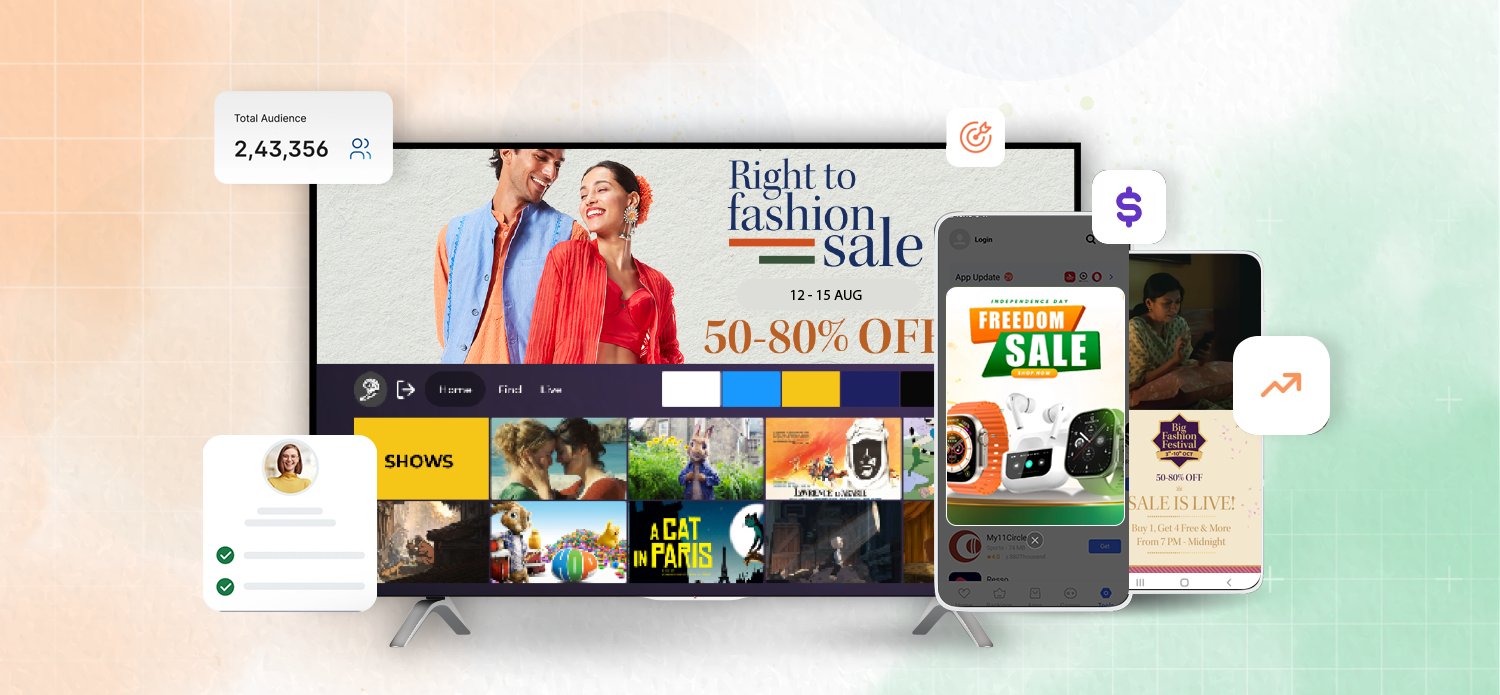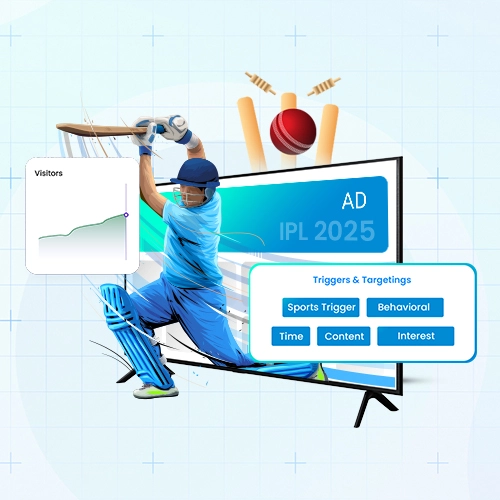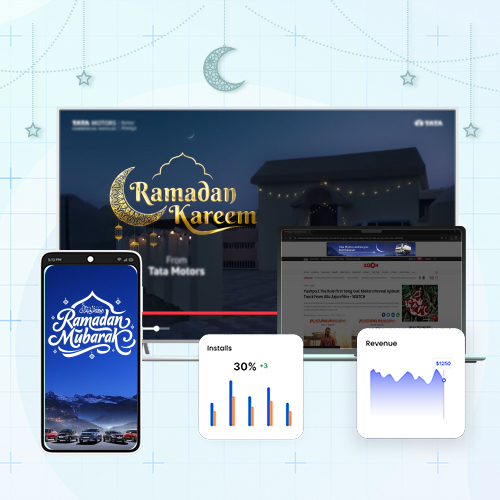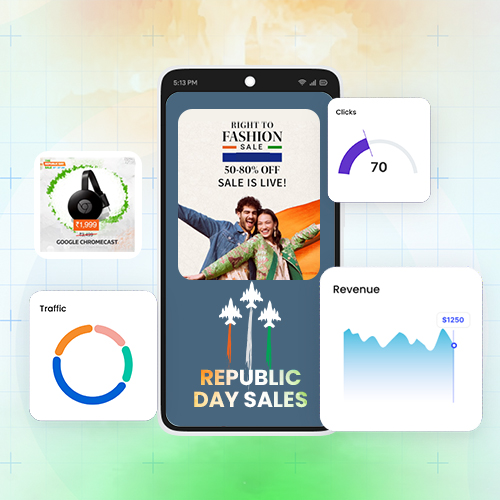With a 23% YoY sales surge, Independence Day marks the start of a high-intent shopping season where wishlisted items move to checkout and timely discounts drive impulse purchases. Moreover, consumer behavior in August shifts noticeably, with the festive season also right around the corner, and only brands that communicate precisely with users can truly stand out. This is where AI-powered audience segmentation becomes your biggest game-changer.
With millions of users active across in-app platforms, OEMs, and CTVs during the holiday week, reaching them requires more than surface-level targeting. However, by analyzing user data such as browsing habits, purchase history, time-of-day activity, and contextual interests, AI tools can identify high-intent audience groups. Whether it’s a millennial searching for eco-friendly home decor, a first-time buyer exploring Independence Day appliance deals, or a Gen Z audience watching patriotic content on CTV, every persona demands a tailored message.
Additionally, advertisers can refine their strategies by incorporating third-party signals, such as contextual content preferences, geolocation data, and engagement history, across multiple platforms, including OEM lock-screen inventory, in-app banners, and smart TV ads. These combined data signals help create micro-segments, including deal hunters, festival gifters, or premium lifestyle seekers. Once segmented, DCO engines deliver personalized visuals, copy, and calls to action to each segment in real time to activate engagement.
However, segmentation is just the beginning, and real-time performance tracking subsequently supports the optimization of results. Metrics such as ad completion rates, engagement depth, scroll behavior, and viewability scores provide dynamic insights into what works and what doesn’t. This enables marketers to reallocate budgets mid-campaign, shifting from underperforming early-morning banner placements to high-impact interactive rich media formats that deliver up to 70% video completion rates during primetime. Furthermore, adjusting creative copy in real time based on A/B test outcomes can significantly increase click-through rates.
This approach drives better results for brands by offering a multi-channel dashboard, allowing advertisers to run synchronized campaigns across platforms, all without the hassle of managing multiple partners. With a single, unified interface for planning, activation, and optimization, it gives teams full control and visibility across the entire campaign lifecycle.
Even beyond the sale week, these insights are valuable for reconnecting with users who lingered on an ad during the I-Day week, clicked “Add to Wishlist,” but didn’t make a purchase. These users can become part of a retargeting journey that extends into the festive season ahead, with smarter messaging and optimized offers.
To measure the long-term impact, they can track multi-touch attribution and user lifetime value (LTV). Tools such as event-based funnels and cohort analysis help understand retention rates, repeat purchases, and the role of each touchpoint. Brands can also assess creative resonance over time by measuring uplift in brand recall, engagement frequency, and eventual purchases among retargeted users vs cold audiences.
In a digital market saturated with sameness, the brands that thrive this Independence Day won’t necessarily be the loudest, but rather the most context-aware, agile, and audience-focused. By embracing AI-powered segmentation and performance-driven campaign management, they can transform a moment of national pride into one of meaningful consumer connection.
Written By: Sanjeev Bankira, Country Head Applabs, India & MENA



